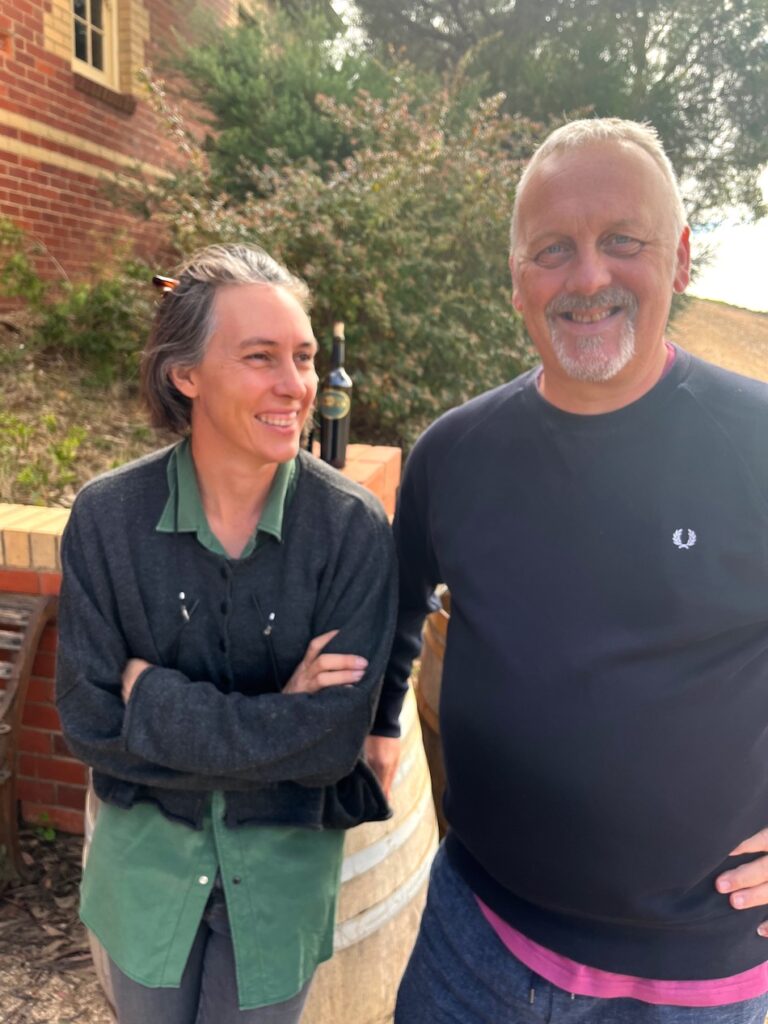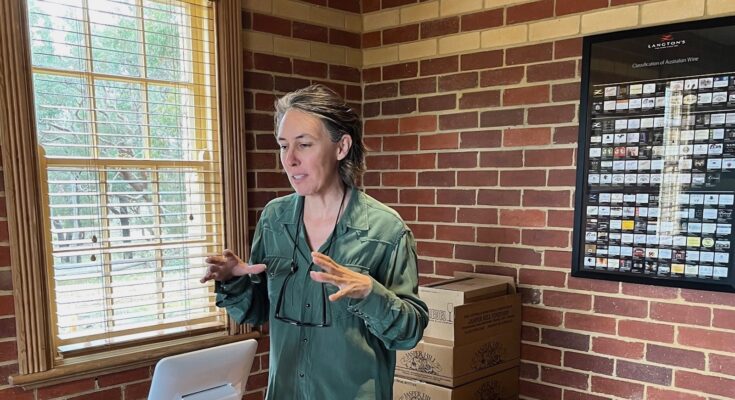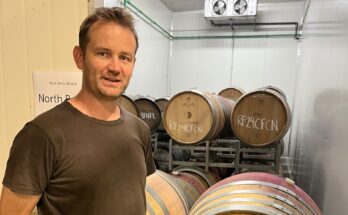Jasper Hill was planted in 1975 – when there really wasn’t much in the ground at Heathcote. It is undoubtedly one of Australia’s great Shiraz producers. When we arrive at the family-run property, we look at a large poster on the wall inside, of the Langton Classification. Both the Georgia’s Paddock and the Emily’s Paddock Shiraz are on the list. Our host – daughter of founders Ron and Elva Laughton – Emily McNally – says “It is an honour to be included on such a fabulous range of Australian wines. I think on the last list they included a Sparkling Shiraz, which is great”
Emily McNally: You’ve come at the time of year when I’m pretty much sold out of everything. I only have the ‘Georgia & Friends’ from our last release, and there’s no Riesling. The last two years – the 2020 and 2021 vintages were affected by the Summer that we had in ’19 going into ’20 where we had the East coast of Australia on fire. We weren’t affected by smoke taint but we just had no fruit. Our vineyards had very hot and windy weather during flowering. We had a very poor fruit set to start with and we ended up with very short cane growth as well. I had a little bit of Georgia’s Paddock, so I purchased fruit and made a ‘Georgia & Friends’, but there’s no Emily’s or Nebbiolo and I made 25 dozen riesling.
I got you a 2017 Georgia’s Riesling to taste. I’m after a riesling that is weighted and textural. Where we grow it helps. The soil and the microclimate, and I do sit it on lees – and I do stir it every now and again. It’s all natural ferment as well – the acidity is all natural – it hangs on. During the ripening phase, the sugar goes up and the acid drops off a little, but I don’t add acid out of a bag. This is all natural. We have warm days up here but we have these lovely cool changes that come through and we have cool nights. That in itself allows the vines to recover and recuperate overnight.
WineFolio: Are you having to make many changes in the vineyards?
EM: We pulled the Semillon out and are just leaving the land fallow for now, planting a few native grasses. We will plant new vines on rootstock, because all of our vineyards are on natural rootstock, and we really want to be here for another forty years. I will take some vines from here and get them checked and grafted. The continuation of the vineyard will still be true to itself. It might be a particular clone, but it has had time to be that clone, in that place, which is why we’ll work on doing that.
We’ve got a few things to do! The last few years we’ve been very heavy on changing our pruning techniques and helping our vineyards recover. After the 2020 vintage that smashed us, we got a viticultural consultant called Tim Brown in.
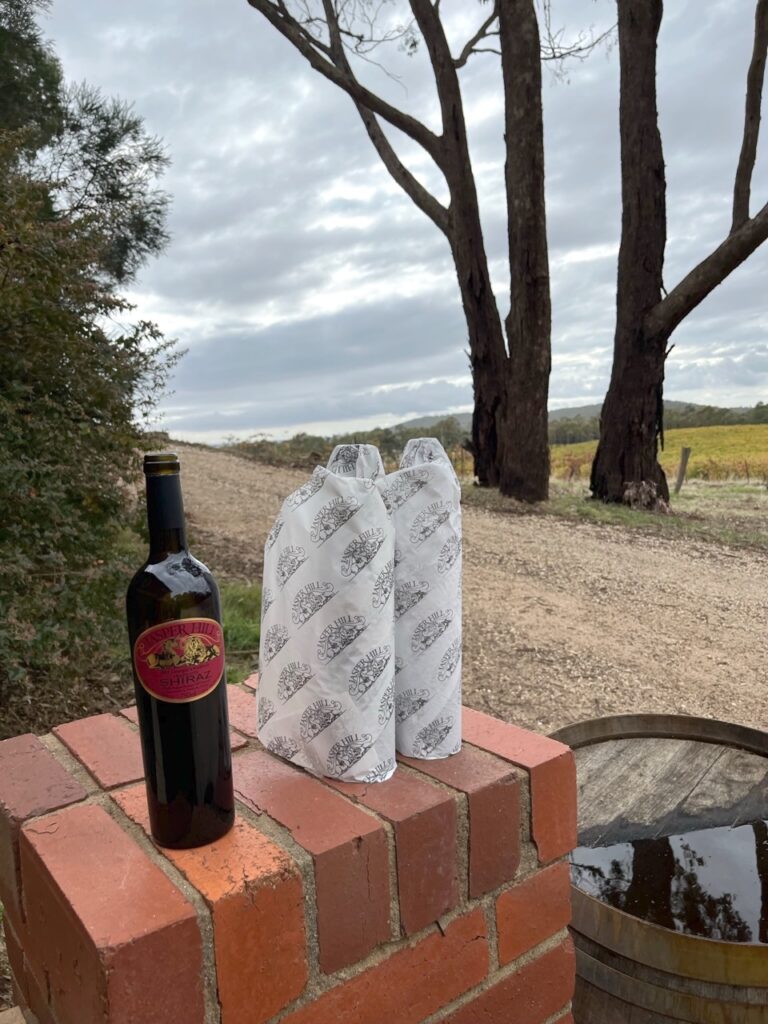
Mum and Dad are in that retirement phase, but they’re still part of the business. But they see things through rose-tinted glasses – from a distance. Whereas Nick and I are on the ground and can see how bad things were. Having Tim come in gave the whole idea an independent perspective. Nick and I knew things were stuffed, but knew we could get it back. Having someone work with us has been fabulous.
WF: So was there quite a lot of compromise?
EM: No, because no-one wins in compromising. Mum and Dad have had to say “Yes – there are sections of the vineyard you can pull out”. And in the ones we’ll keep we’ll try this new pruning technique. We’ve always been doing cane-pruning, but now instead of having two canes and two random spurs, we’re going to be running off those spurs the whole time. The bottom bud will always be our spur, and the top bud will always be our cane. So when we do our cut, it is always above the sap flow of what is going to grow elsewhere in the cane.
WF: What, for you, is the best part of the year?
EM: Pruning is the most important part of the year, and I do enjoy doing it. We’ve had several years of a bad-looking vineyard. I’ve been out picking a lot – I was looking at all this beautiful fruit that I was happy to have, but still looking at where my spur cane was! I get a lot of joy out of the winemaking too, definitely. There’s different parts of things that mean things to me. The smell when you first walk into the winery and you can smell that fermentation has started. To me, that’s a connection to my Dad. Because as I’ve grown up, there’s so many times, over my lifetime where I’ve heard Dad go “Can you smell it Em? It’s started.”
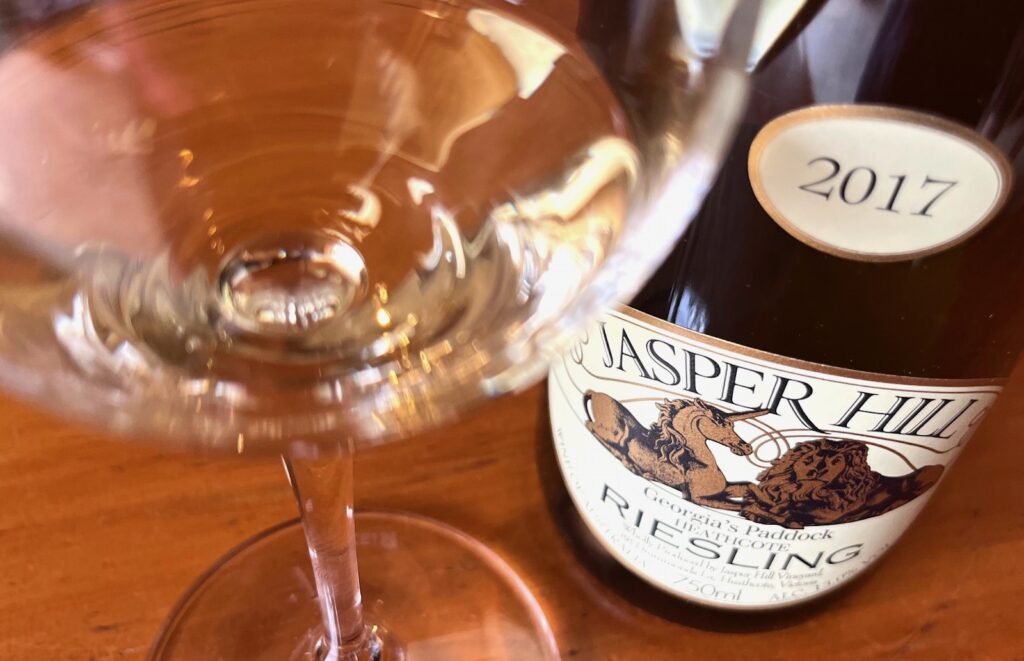
For me, there’s so many things. We live, breathe this stuff. Sometimes we ignore our families because of it. I can’t think of one thing, and say ‘that’s the thing’. There’s so many times I think “Sod this, why are we doing this!” – that’s the other side of it. Because you work so many hours, for so long, and you just think ‘God, got another bruise or a cut, or whatever’. But the customers that I have…we don’t make a lot of wine… but the ones that come here and taste our wine, seek us out. And the majority are just gorgeous customers.
WF: You’ll have seen a few changes over the years?
EM: In the 80’s our wines were around 12% alcohol – sometimes 11.5% – it wasn’t unheard of. Then all of a sudden it jumps up to 13%. Then up to 14% and there have been 15% wines. What I find is that even though it is high in alcohol, it hides it, and balances. These days I’m picking earlier and picking just to keep those characters that we’ve had over the years, but also to pare it back a little bit. When I made the Occam’s it was a light to medium bodied red that still ended up being 15%.
I ran into the warehouse and grabbed an Emily’s Paddock Shiraz 2001. We’ll start on that, and we’ll try an ’09 Georgia’s Paddock next. I haven’t had one in a while. Originally the wine was made here, well before I started in ’01, but all the equipment we use now is bigger – the sorting table, the de-stemmer and so on. The eucalyptus leaves are what I look for the most off the sorting table. It depended on the year, but Heathcote wines would be described as a peppermint, or eucalypt character. I pulled six leaves out this year.
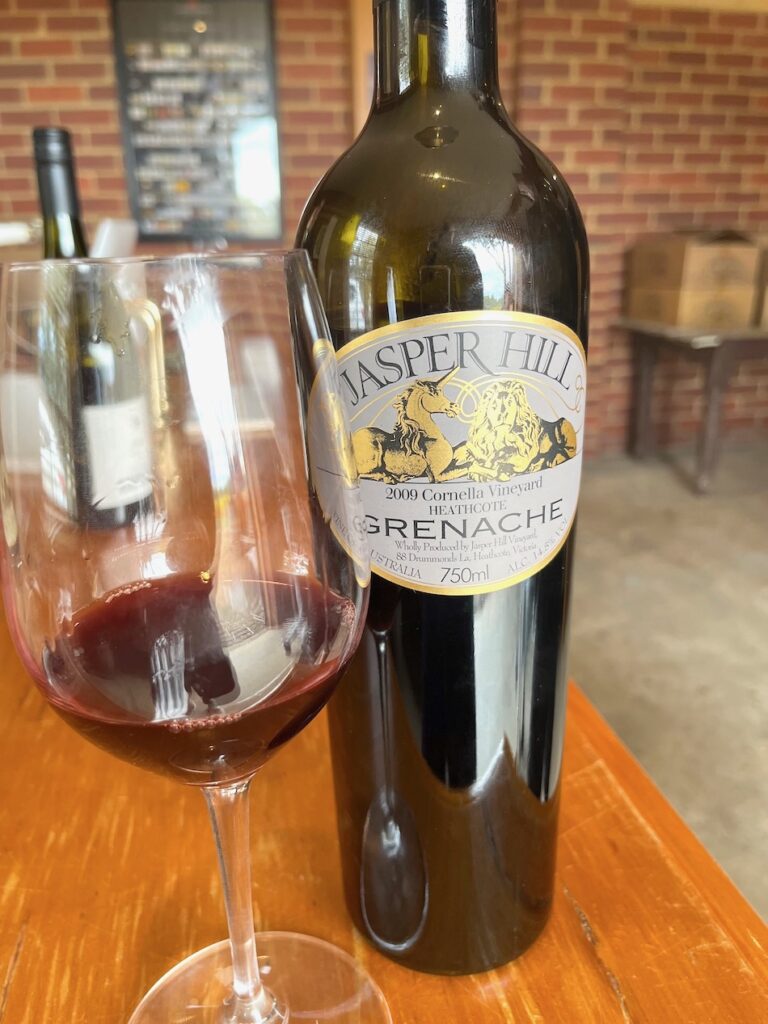
WF: Is there anything that you wouldn’t do again, if you could rewind?
EM: If I was to make a Grenache again I wouldn’t let it hang on the vine so long. Personally I’d go for a lighter, brighter Grenache. I did feel that ours ended up more on that over-ripe, almost jammy style. To be honest I’m not in a hurry to put Grenache in the ground. It’s variety that would be good with this warming climate, but at the moment my priorities will be putting Shiraz in, from budwood that we’ve got. And also putting in Riesling, Nebbiolo and Fiano under American rootstock as well. They’re the things that we need – that’s what our label does!
And then after that maybe I’ll look at doing something else, but Grenache – I don’t know. There’s something about Grenache. I’m not as enamoured with it as much as others. I find it very one-dimensional. Give me a Nebbiolo any day. I can’t grow Pinot here – but give me a Pinot. I prefer to drink other things than Grenache. We’re not in Chateauneuf-du-Pape – I’m talking about what we would do here.
WF: Is there anything that you’d like to have a go at?
EM: I don’t know. I don’t know. We take a long time to make decisions here. At the moment my brain is filled with the three years of trying to fix up what we’re doing and we’re halfway through the whole thing. I’m in that mindset and can’t think beyond that. The beauty of what we do is that you, the customer, aren’t able to see any issues of this – in your glass. We’ve got a changing climate and an old vineyard and if I want to have another forty years, then there are things that I’m going to have to do.
Now’s the time to do it otherwise when are we going to? It is a long game that we play. I want to make a wine that can be drunk young – and aged! I like it to be able to do both. A lot of our wines have been able to do both – where if you drink it in the first couple of years, you decant it and drink it as a young wine, and it still shows well. But as it ages it will also work its magic.
WF: But the ageing in the wines is just beautiful – how they still have that sense of place, and signature of Jasper Hill, but just meld together so well, taking away that shine of youth and it is replaced with something still beautiful, but more elegant, less precocious. I was given a 2018 Emily’s Paddock to try recently and I didn’t fully ‘get it’, as it seemed so young – disjointed almost.
EM: I didn’t like the ’18 myself. It has a taste of Emily’s tears in it – that vintage. I hated the vintage! Absolutely hated it. It was big. It went on forever. There was a lot of fruit, and I couldn’t get it off fast enough. I had so many stuck tanks that I had to work on. Everything about it was just not pleasant and I think you can see in the end product. I think it needs fifteen years on it – I might love it more then. Every year I learn. I know I’ve been doing it for 23 years, but every year I learn something.
I’m not showing you wines that I think are our best vintages. If I was to do that I’d have chosen different vintages. I’d have pulled an ’06 and a ’15 out. I’m also not a person that goes “I’ll only show the ones that I think are the best” because what I think are the best might not be what you think are the best. I’m going to show you that every vintage has a different story. There’s a continuity of the place, but there’s so many variables. The general punter has no idea about that there’s so many variables that make the end product in the glass.
WF: And I guess you don’t have the option to declassify something and put it somewhere else?
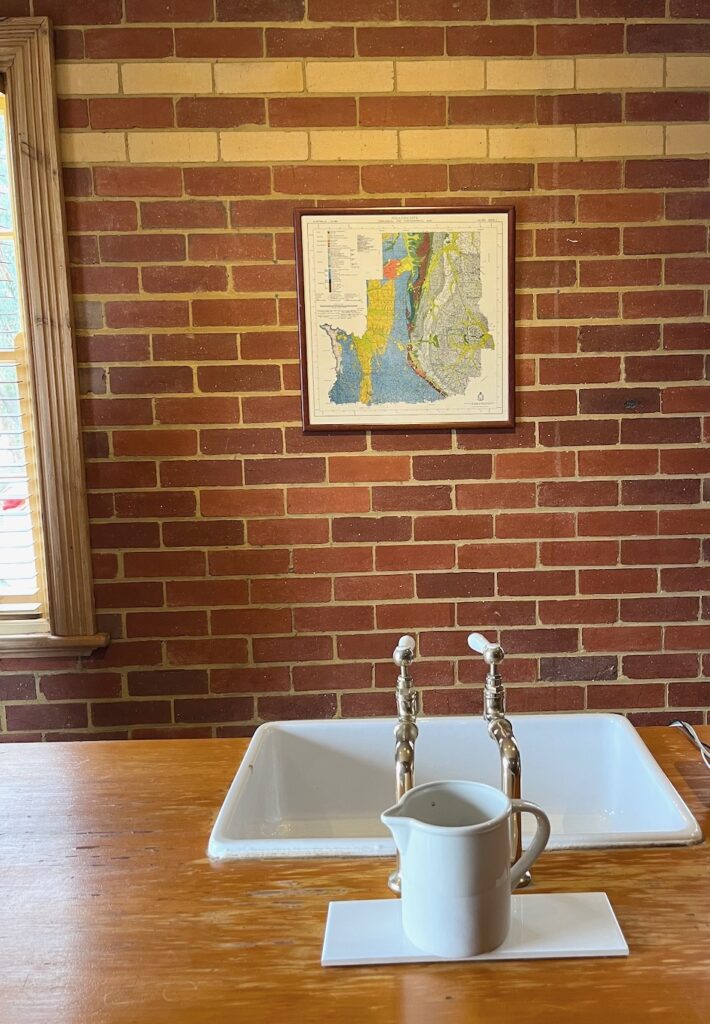
EM: I have ‘Georgia’s Paddock’ and that’s it. If I don’t like the barrel it doesn’t go anywhere else. The only time I’ve blended the Emily’s and Georgia’s together was in the ’11. It was a very wet year and we made a wine called ‘Sisters’. I felt they were lovely wines on their own, but they complemented each other and were better together. We did also, for our 25th Anniversary, make magnums of the Georgia’s and Emily’s blended together.
WF: Are there any stand-out years – you mentioned 2015?
EM: the ’15 Georgia’s got on the Wine Spectator’s Top 100 Wines of the world. That was my first vintage that dad wasn’t part of. Mum and Dad went to Europe and they said “Don’t worry, vintage will start when we get back!”. And we’d picked everything by the time they came back. That was a fun vintage. My friend Georgia – who I make the Fiano with – came and stayed and made the Shiraz with us as well. That was the start of Dad not being in the winery. They come and help us process sometimes. Last year they helped a lot! Mum picked fruit! But as far as all the decision making, from 2015, has been me. I include him in things like blending because we’re a family, but at the end of the day the decisions are mine.
I’m getting ready for getting last years barrels out, and we had to get the alcohols done so that we’ll have labels in time. I asked Dad if he had some time up his sleeve and could do the analysis on the alcohols for me. So he does it and comes back and I thought “That’s a bit high”. So we break it down into batches and we work out that there’s a batch of wine that is 16.7% alcohol. As soon as school goes back I’ll be emptying barrels, filling barrels, pressing wine, blends, and it will be right up to the wire.
WF: What do you think about reviewers who judge your product, and give it marks out of 100?
EM: You’ve given it a number, but really it is just ‘an experience that I have loved and will remember – for these reasons, in this moment’. I have no interest or care about scoring. I don’t, I never have. It’s a thing in the moment, with the people you love. I make wine because I love growing grapes and love making wine. I have a terrible memory and always have to ask my husband what things were. But there was a Nebbiolo that we bought in Italy, and we didn’t like it. We shoved a cork in it and put it in the car, and went to caves the next day with the kids. We sat at the river and ate a picnic. Shoved the wine in the river to cool down, and when we drank it we were like ‘Holy shit, I don’t know what we’ve done with this wine, but it is now fabulous!!’ It’s that moment.
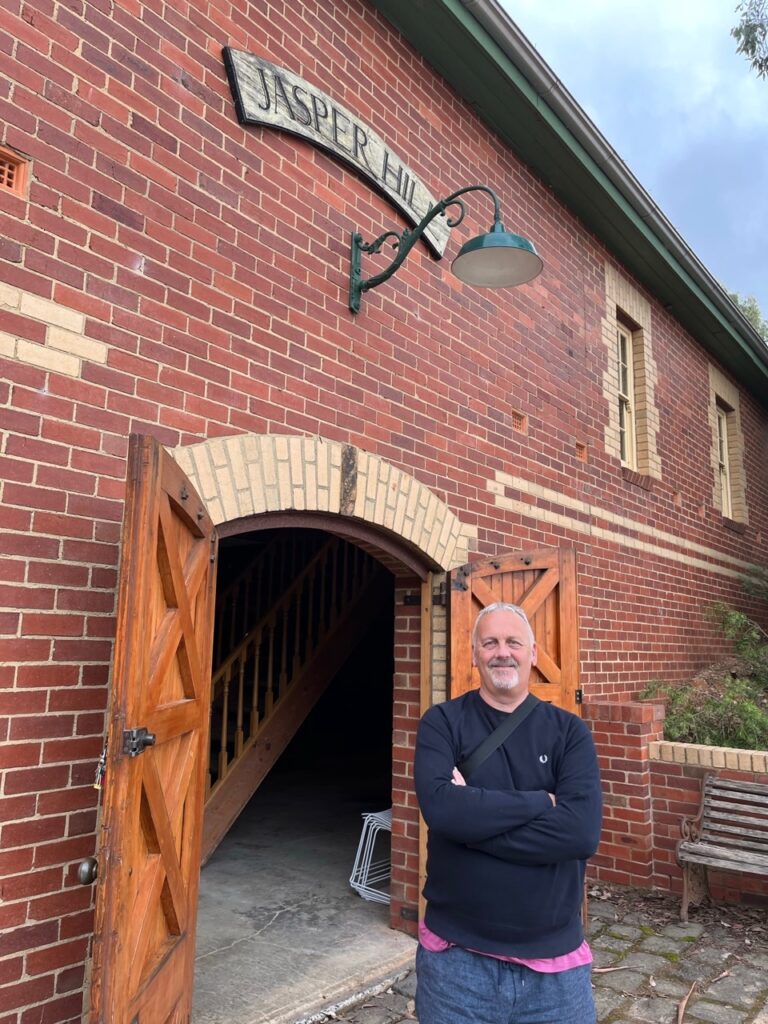
You’ve now got the 2021, our latest release, which came out in August last year. It is a ‘Georgia and Friends’. The 2020 vintage was devastating for us. Very little fruit and very limited cane growth. In that Winter we made the decision to sacrifice the ’21 crop, and pruned the majority of the vineyard, not for fruit, but for vine health, to get us back on track. This wine does have a component of Georgia’s in it, but half of it is from elsewhere. I think most people who have bought this over the last 12 months, will be drinking it as a younger wine.
WF: Are there big differences across the region?
The Heathcote GI is long and skinny and you’ve got climatic changes between the southern part and the northern parts of the region. We’re 300ft here and further north it is not that the elevation changes massively, but it is much warmer. And when it rains it can bucket down up in the north. In the southern part you’ve got more of a granitic soil profile, as opposed to heading north it is that cambrian red soil.
The Occam’s Razor Shiraz was always very different from the Jasper Hill because it came from the south – with hungrier soils. The fruit always had different flavours, with more savoury notes. Here you do get an iron earthiness from the red soils. The Occam’s that I make now doesn’t come from there, and I didn’t make any in 2019. I wasn’t even sure if I would continue the label, but after that year, in 2020, I thought “You know what – I am going to”. When I was looking for fruit to go into the Jasper Hill blend, I found it hard to find fruit from an organic vineyard, but that becomes part of the story of our forty-something years.
WF: I thought your life was all just sitting about in the vineyards, reciting poetry and having picnics?
EM: Hahaha. We’re farmers and we are subject to what the environment throws at us. And the environment is changing. Next to Georgia’s Paddock we have a vineyard that we plan to rip out two-thirds of, and re-establish the other third of it. It has some gullies all through it and it is prone to frost now that the climate has changed. We’re not going to put the expense of a frost fan in – if we were going to do it we should have done it fifteen years ago, and it wasn’t done. It has repeatedly been frosted in these gullies, so we’re going to pull those out and re-jig that section which we’ll keep.
Vineyard management becomes even more important now, because what Mum and Dad started with is not what we’ve got now. My brain goes “Do we end up putting some sort of netting up over the vineyard to shade it?” The winds over flowering time can be so much stronger now, so do we something about that? It’s an interesting game we play.
